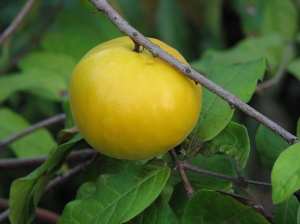 A wonder from the Amazonas! Araza is an extremely rare New World fruit that is not widely known even in Amazonia Brazil where it is native. Eugenia stipitata includes two subspecies: stipitata, from the state of Acre in Brazil, and so/ via, which is more widely distributed from the basin of the Ucayali River in Peru. The latter seems to have been semi-domesticated in western Amazonia, although it may have originated in the southeastern portion of Amazonia. The arazá must have undergone a long process of selection by the Amerindian communities, as can be deduced from the large size of the fruit which, within the cultivated material, can be as large as 12 cm in diameter and 740 g in weight, compared with the wild populations which do not exceed 7 cm in diameter and 30 g in weight. The species is still in the full process of domestication. The two institutions which have worked most on this fruit are INIAP’s experimental station of San Roque in Iquitos, Peru, and INPA in Manaus, Brazil.
A wonder from the Amazonas! Araza is an extremely rare New World fruit that is not widely known even in Amazonia Brazil where it is native. Eugenia stipitata includes two subspecies: stipitata, from the state of Acre in Brazil, and so/ via, which is more widely distributed from the basin of the Ucayali River in Peru. The latter seems to have been semi-domesticated in western Amazonia, although it may have originated in the southeastern portion of Amazonia. The arazá must have undergone a long process of selection by the Amerindian communities, as can be deduced from the large size of the fruit which, within the cultivated material, can be as large as 12 cm in diameter and 740 g in weight, compared with the wild populations which do not exceed 7 cm in diameter and 30 g in weight. The species is still in the full process of domestication. The two institutions which have worked most on this fruit are INIAP’s experimental station of San Roque in Iquitos, Peru, and INPA in Manaus, Brazil.
 Today, the araza is cultivated on small properties throughout the basin of the Solimoes (Alto Amazonas), not as a commercial crop but as part of the complex mosaic of crops characteristic of the traditional agriculture of the region. It is relatively common on the town markets of Tefe, which is midway between Manaus and Iquitos. Arazá is used to make juices, soft drinks, ice-cream. preserves and desserts. The fruit is rarely eaten raw because of its acidity (pH 2.4 in the case of the juice). Unlike camucamu (Myrciaria dubia), more than 20 percent of whose fresh weight is represented by 2 percent of ascorbic acid. arazá’s potential is due to its intrinsic characteristics as a fruit: pleasant flavour, colour, texture and smell. The nutritional value of araza is very similar to that of oranges, with the exception of the vitamin C content which is more than double in araza.
Today, the araza is cultivated on small properties throughout the basin of the Solimoes (Alto Amazonas), not as a commercial crop but as part of the complex mosaic of crops characteristic of the traditional agriculture of the region. It is relatively common on the town markets of Tefe, which is midway between Manaus and Iquitos. Arazá is used to make juices, soft drinks, ice-cream. preserves and desserts. The fruit is rarely eaten raw because of its acidity (pH 2.4 in the case of the juice). Unlike camucamu (Myrciaria dubia), more than 20 percent of whose fresh weight is represented by 2 percent of ascorbic acid. arazá’s potential is due to its intrinsic characteristics as a fruit: pleasant flavour, colour, texture and smell. The nutritional value of araza is very similar to that of oranges, with the exception of the vitamin C content which is more than double in araza.
The arazá is a shrub or small tree which grows up to 2.5 m. with a fair degree of branching from the base. The leaves are simple, opposite, elliptical to slightly oval and measure 6 to 18 x 3.5 to 9.5 cm. The apex is acuminate, the base rounded to subcordate and the primary and secondary nervations are fairly evident. The inflorescences are in axillary racemes, usually with two to five flowers which are 1 cm wide and pedicillate, have four rounded sepals and five white, oval petals. There are numerous stamens and an ovary with three or tour locules. The fruit is a subspherical berry, reaching 12 cm in diameter and weighing 750 g w hen ripe; the flesh is yellow and thin; the skin is shiny. velvety and yellow, with few seeds which are oblong and measure up to 2.5 cm. The subspecies stipitata has fewer stamens and an arboreal habit, whereas the subspecies sororia has a shrub habit and has more stamens.
Source:hort.purdue.edu
Instructions
Clean fruit and remove inner flesh and seeds. Cut into smallish chunks, about 1 inch long by 1/2 inch wide. Measure by weight or by volume. Place in pot. Araza is a very juicy fruit and doesn’t need water added. It does need sugar. Use 60% sugar by weight, for example 5 lbs of fruit and 3 lbs of sugar. Put on stove and heat, stirring until sugar is dissolved. Bring to a nice low boil. Araza, and many other fruits, will produce a foamy froth in the initial stage of the cooking process.
This froth will discolour the finished jam, always remove it with a spoon. It is excellent in cookies or for baking and one can make sorbet with it. Put the froth in a glass and when it cools a little some juice will settle to the bottom, pour this back into the jam. At some point, perhaps 15 minutes after you begin, the froth will stop and the texture of the jam will change. The boil will not be so asctive as the mixture begins to thicken. The characteristic plop plip sound of bubbling jam will be heard. The colour will begin to deepen too. Turn the heat down, and stir more frequently. After 7 minutes or so, begin to test the jam on a metal spoon. You are looking for a skin to form on the surface.
Keep testing. Soon – though this takes a little experience, you will see just the point of readiness: the jam is thicker and when you move the spoon or ladle slowly through it, the ladle will push the jam ahead of it out of the way rather than simply moving through the liquid. Or as you move the jam you will be able, for an instant, to see the bottom of the pot behind the ladle. If the jam on the ladle is forming even the slightest of skins, turn off the heat and wait for a minute or two: a skin should form on the surface of the pot. The jam is now ready and can be ladled into freshly boiled (for 10 minutes)jars. Fill to within a half inch of the top, carefully clean the rim and outside edge of the jar, screw on the freshly boiled jar lid and set aside.




























The author’s BLOG, very good, I love it. Thank you for your sharing, very grateful!
You’re welcome!
Thank you, for your comment.
MMMMmm-Hmmm! I love jam!
Did you know that Araza is used to marinate the shrimps, chicken or other types of meats? It gives a superb flavor to the food.
Yes, I know!
I read a magazine article recently that said it is excellent for cooking!
i need seeds, let me know if you can sell some
thanks
Brad
email below
Hi Brad,
Our neighbor has one of these trees, and as he is out of the country- who knows for how long, we harvested some of these fruits. If you still need seeds, we are in LA, and could probably mail them.
I see that this was seven years ago and the world is different now- literally.
I hope you are well,
Regina
Yo la probé en fresco, sabe como a sabor de granadilla, es muy fresco. Endulzar al gusto. También se puede hacer en yogur. Deliciosa fruta rica en vitamina C. OJO NO LICUAR LA SEMILLA, QUITELE LA CASCARA Y SAQUELE LAS SEMILLAS, EMPIECE A LICUAR Y ECHARLE AZUCAR , AGUA O LECHE. RESULTADO UN FRESCO RIQUISSSSSIMO Y FRESCO. CUIDADO CON LA PRESIÓN SE LA PUEDE BAJAR.
Pingback: Araza Fruit (Eugenia stipitata): Season, Taste & More | Try Green Recipes